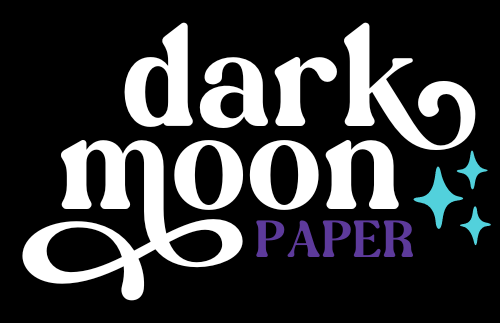Want to take control of your time and boost productivity? Start by creating a daily schedule that fits your life. A good schedule balances work, personal time, and self-care while reducing stress. Here’s how to get started:
Key Tip: Start small – focus on one habit or change at a time. A consistent, flexible schedule can help you manage your time and feel more in control of your day.
Take a close look at your current routine to spot patterns and areas that could use improvement. Knowing your habits is the first step to creating a schedule that truly works for you.
Start by logging your daily activities. Studies show that tracking your time can help you manage your schedule better and improve your work-life balance . Keep track of these key details:
You can use tools like TimeCamp for automatic tracking or apps like Daily (for Apple devices) and Apploye for manual logging . The key is to pick a method you’ll stick with. Once you’ve logged your activities, it’s time to analyze your main tasks.
"Your daily agenda determine the secret of your success. (…) You will never change your life until you change something you do daily." – John C. Maxwell
After at least a week of tracking, review your log to identify essential tasks and time-wasters. Look for both obvious distractions and less apparent inefficiencies :
| Type of Time Waster | Examples | Solution |
|---|---|---|
| Obvious | Social media, excessive TV | Set strict time limits |
| Hidden | Over-researching, unnecessary meetings | Simplify processes |
| Distractions | Constant email checking | Schedule specific check-ins |
Focus on tasks that align with your goals and adjust or eliminate those that don’t. Regular weekly reviews can help you stay on track .
Identifying your most productive hours can make a big difference in how you plan your day. Productivity expert John Boitnott suggests:
"Truly determining your peak times of day requires a serious period of self-reflection. It’s important to honestly take a look at your day and note when you’re feeling most and least energetic."
Here’s how to figure out your peak times:
Pay attention to your natural ultradian rhythm – cycles of peak focus lasting 90-120 minutes followed by rest periods . Use this information to schedule high-energy tasks during your peak times and save routine work for low-energy periods. With these insights, you’re ready to move on to Step 2 and start building your daily plan.
Now that you’ve identified your current schedule and peak productivity periods, it’s time to design a daily plan that aligns with your goals and energy levels.
Time blocking is a method that helps you structure your day for maximum efficiency. Cal Newport, author of Deep Work, highlights its impact:
"A 40 hour time-blocked work week, I estimate, produces the same amount of output as a 60+ hour work week pursued without structure."
Break your day into focused segments:
| Time Block Type | Duration | Best Used For |
|---|---|---|
| Deep Work | 90–120 mins | Intensive tasks, complex work |
| Shallow Work | 30–60 mins | Emails, routine tasks |
| Admin Time | 15–30 mins | Planning and organizing |
| Energy Renewal | 15–20 mins | Breaks or physical activity |
This format ensures you stay productive while leaving room for flexibility.
Including buffer time in your schedule is essential for handling unexpected tasks or delays. Research suggests that working without breaks can lead to exhaustion and reduced performance . Plan for these intervals:
Dr. Indumathi Bendi underlines the value of preparation:
"Carrying out routine activities reduces stress by making the situation appear more controllable and predictable. Preparedness is a key way to prevent stress."
A well-rounded schedule includes both professional and personal commitments. To create balance:
Digital tools can help you fine-tune your schedule. Project management apps are especially useful for organizing recurring tasks and adjusting priorities .
With your daily plan in place, focus on building consistent habits to support your long-term well-being.
With your plan in place, it’s time to strengthen it by building healthy daily habits. These habits can help you stay productive and manage stress more effectively . Let’s look at how to use breaks wisely, include health-focused activities, and establish a better sleep routine.
Taking breaks at the right times can improve your focus and help you avoid burnout. Regular pauses give your brain a chance to recharge, preventing mental fatigue . Here’s an example of a break schedule you can try:
| Work Period | Break Duration | Suggested Activities |
|---|---|---|
| 25 minutes | 5 minutes | Stretch, drink water |
| 52 minutes | 17 minutes | Go for a walk, practice deep breathing |
"Once you learn how to work for 15 minutes, start increasing the time before taking a technology break."
The World Health Organization suggests getting at least 150 minutes of moderate exercise weekly . You can break this down into small, manageable actions:
Adding 10-15 minutes of meditation or gratitude journaling can also help clear your mind and improve focus.
Good sleep is essential for staying productive. Adults typically need 7-9 hours of sleep each night . Here’s how to create a consistent sleep routine:
"When evaluating sleep habits, the challenge becomes figuring out how to break the bad habit and having a plan in place if you falter. That plan must include forgiving yourself if you have slip-ups and making sure you only start with 1 or 2 routine changes at a time."
Planning tools can make managing your schedule much easier. The right tools help you stay organized and ensure your plan is carried out effectively.
Different time management methods can help you organize your day and stay productive. Here are some popular approaches:
| Method | How It Works | Best For |
|---|---|---|
| Time Blocking | Allocate specific time slots for tasks to stay focused | Deep work or tasks requiring focus |
| Pomodoro Technique | Work in 25-minute intervals with short breaks | Beating procrastination |
| Getting Things Done (GTD) | Organize tasks into actionable steps and review regularly | Handling multiple projects |
"A schedule defends from chaos and whim." – Annie Dillard
The type of planner you use should fit your work style and needs. For instance, Motion automatically schedules tasks and syncs with your calendar , while paper planners can help reduce stress and improve focus .
Here are two main types to consider:
Once you’ve picked a planner, focus on addressing common scheduling challenges to keep everything running smoothly.
Even with a solid plan, challenges can arise. Here’s how to tackle them:
The goal is to find tools that fit your style and adjust them as your needs shift.
Keep an eye on how well your schedule is working by using productivity tools to track key areas.
| Tracking Area | What to Monitor | Action Steps |
|---|---|---|
| Task Completion | Daily completion rates | Analyze unfinished tasks for recurring patterns |
| Time Management | Planned vs. actual duration | Adjust time blocks if you’re consistently off |
| Energy Levels | Peak productivity periods | Schedule critical tasks during high-energy times |
Set measurable goals (like SMART goals) to evaluate your progress. These insights will help you fine-tune your routine effectively.
Try an A/B Schedule System:
If disruptions arise, adjust your schedule without guilt. For instance, if you oversleep and miss your morning workout, fit in a shorter session later or focus on other top priorities instead. Stay flexible to keep your day on track .
Once you’ve updated your routine, make sure it stays effective over time by regularly reviewing and adjusting it as needed.
Creating a daily schedule is about finding the right balance between structure and flexibility. The goal is to design a system that aligns with your objectives while adapting to the unexpected.
Here are three key elements to keep in mind:
| Element | Strategy | Implementation |
|---|---|---|
| Flexibility | Use time blocks | Plan tasks in broad periods |
| Buffer Time | Account for surprises | Add short gaps between tasks |
| Consistency | Build habits gradually | Focus on one habit at a time |
Your schedule should reflect what truly matters to you. As Certified Professional Organizer® Diane Quintana says:
"A plan is not a hard and fast rule. The best plans are organic and ever evolving."
Life happens – so have a backup plan ready. If you miss your morning workout, consider alternatives like a midday walk or an evening session.
Regularly reviewing your schedule helps keep it effective. Try theming your weeks for added structure, while still allowing room for adjustments. Focus on your top priorities, and use tools like color-coded planners or charts to track your progress. Small tweaks and consistent reviews will help strengthen your routine over time.
Be patient as you make adjustments. Every day is a chance to fine-tune your schedule to better fit your goals. With the right balance of structure and flexibility, your daily routine can boost both your productivity and overall well-being.
Stickers Made for Planning
Our custom stickers are a fuss-free way to brighten up your planner pages with perfectly-sized designs that add a spark of personality to every layout.

Why use planner stickers?
Planner stickers make organizing easy, fun, and personal! Add color, creativity, and structure to every page, transforming your planner into a tool that reflects you. Perfect for tracking, decorating, and staying inspired daily!








Hello and welcome!
I’m Rachael Snow, a lifelong artist and entrepreneur, and I started Dark Moon Paper to blend my love of art, technology, and the mysterious beauty of the world around us. My sticker kits are meant to set the mood, tell a story, and give you a little escape from the ordinary.
I work from my cozy studio tucked away in the beautiful woods of Oregon, surrounded by nature and a dark night sky full of stars.